Small brown, black or white bugs in the kitchen start up very simply - we can bring them from the store along with a pack of oatmeal, rice, flour, gallet or dried fruit. A product infected with larvae in the warmth of kitchen cabinets is quickly becoming a hotbed of insects in all other products. And if you do not remove them in time, you will soon be able to detect pests even in empty pans, and then completely on the walls and curtains. In this article you will find photos of the most common species of bugs (namely, Suriname’s mucoed, bread grinder, flour beetle and weevil), as well as instructions on how to deal with them and what to do to avoid re-occurrence.
4 steps to get rid of pests
Step 1. Inspect and discard all contaminated products.
Identifying all foci and potentially contaminated products, and most importantly, getting rid of them is a prerequisite for successful insect control in the kitchen.
- The focus can be anything - not only cereals and flour, but also nuts, spices, biscuits, pet food, bait for fishing, dried flowers.
- If you saw a beetle somewhere on a shelf, apron, facade or tabletop, then, most likely, the hearth is located somewhere very close, but ... not necessarily.
- Check and unpacked products, beetles can easily gnaw through cardboard, foil and cellophane.
- Inspect products for the presence of pests need not only from above, but also to the full depth. For example, some bugs in the croup (eg, bread grinders) can "live" at the very bottom.
Keep in mind that if at least one insect is found in the product, it means that it is infected with larvae and must be disposed of. However, if you wish, you can clear the grains from the adults, sifting well and sorting them out, and then doing everything that is described in the next step.
Step 2. Process products that seem to you uninfected.
It is clear that the product in which the insects have settled must be discarded. But what if the bugs in the flour or groats did not show up? However, the best and easiest way to get rid of supplies, because everything that was in the same cupboard with a fire, may already be infected. However, you can save products in the following ways:
- Pour the cereal / flour on a baking sheet and place it for 40-60 minutes in an oven preheated to 50 degrees.
- Put food on the balcony (in winter) for 3-4 days or “freeze” in the freezer for 3-4 days.
Step 3. Clean shelves and jars
Now you should thoroughly clean the empty kitchen cabinet and its surroundings, paying particular attention to cracks and corners.
- Use a vacuum cleaner that will tighten the bugs, their larvae and excrement hidden in the cracks. After this procedure, a bag for a vacuum cleaner should be thrown out or, after emptying it, “freeze” for 3-4 days to prevent re-infection.
- Do not use laundry detergents, bleach, ammonia, or chlorine-based cleaners. They will not have any effect on kitchen pests.
- Do not forget to wash, as well as treat with cold or warm tare, which was stored spoiled cereals.
Vacuum cleaning should be sufficient to remove all traces of the beetles, but it is recommended to wipe the shelf with soap and then vinegar, diluted in water.
Step 4. Protect products from reinfection
As a precautionary measure against reinfection it is necessary:
- Store cereals, flour, pasta, biscuits, dried fruits, spices and animal feed, etc. in tightly closed glass, metal or heavy plastic jars / containers. This will prevent not only the entry of insects into the container, but also their escape and spread.
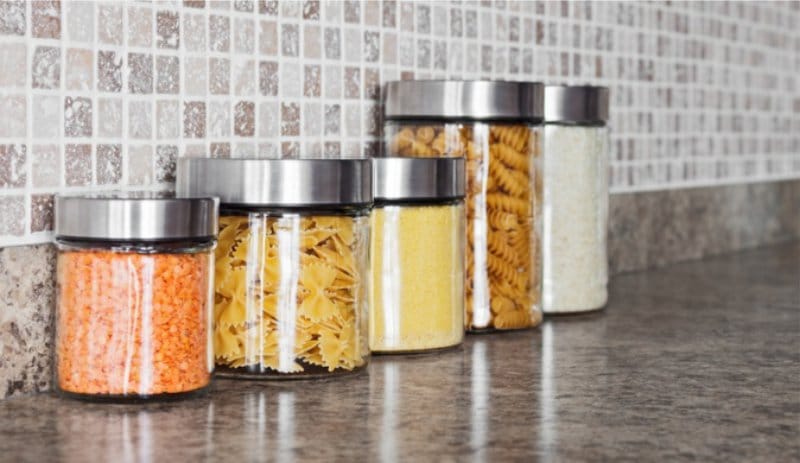
- Another reliable way to store food is in the fridge or freezer.
To strengthen the protection of products from bugs, put in a jar or container on top of cereals or any other product:
- A couple of cloves of garlic, peeled from the husk (the top of the garlic is not necessary to cut off);
- Bay leaf;
- A couple of things mint gum;
- Nail or steel wire. Keep in mind that they can not be washed, otherwise the metal will rust and ruin the food. Dry cleaning with a rag will be sufficient.
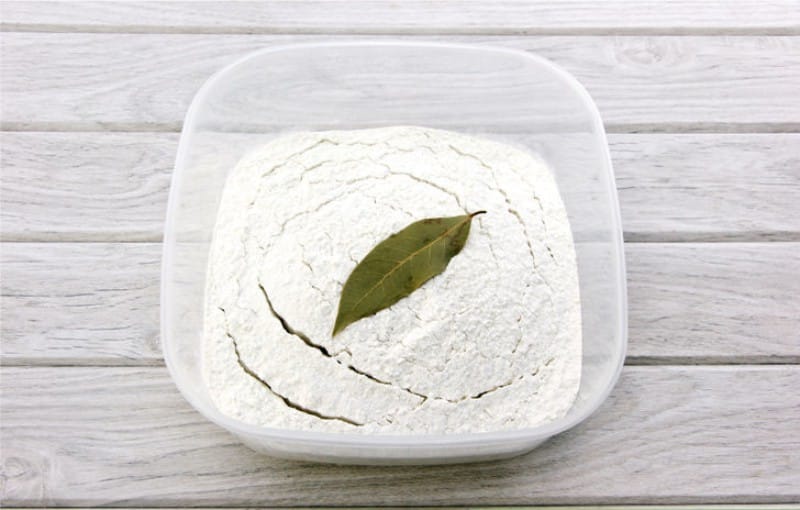
Bay leaf to protect the flour from insects
By the way, all these "scares" can be expanded on the shelves.
And a little more about prevention
The following tips may be helpful:
- Buy food in small quantities to use them in no more than 2-4 months. Try not to store food for longer than this period.
- Use products from older packages (or open) previously freshly purchased / closed.
- When buying packaged foods, check the integrity of the packaging and, if possible, the presence of insects.
- Remember that cardboard, foil, paper or plastic bags will not prevent the growth of insects.
- Keep food storage areas clean and do not allow crumbs or food particles to accumulate, as stale food will attract insects. Cleanliness is especially important in animal feed storage areas.
If the bugs in the kitchen reappear, check the other rooms in the apartment for the presence of breeding centers and repeat the steps described. If the insect problem doesn’t go away, seek help from home pest control professionals.
Meet the enemy in the face
And now we offer to get acquainted with the inhabitants of your kitchen closer. Here we have collected photos of the 4 most common types of bugs and links to Wikipedia articles about their features and favorite food.
Below is a photo of the Suriname mucoed (Latin name of the mucoed: Oryzaephilus surinamensis). Suriname mucoed is difficult to confuse with someone because of its saw-like torso.
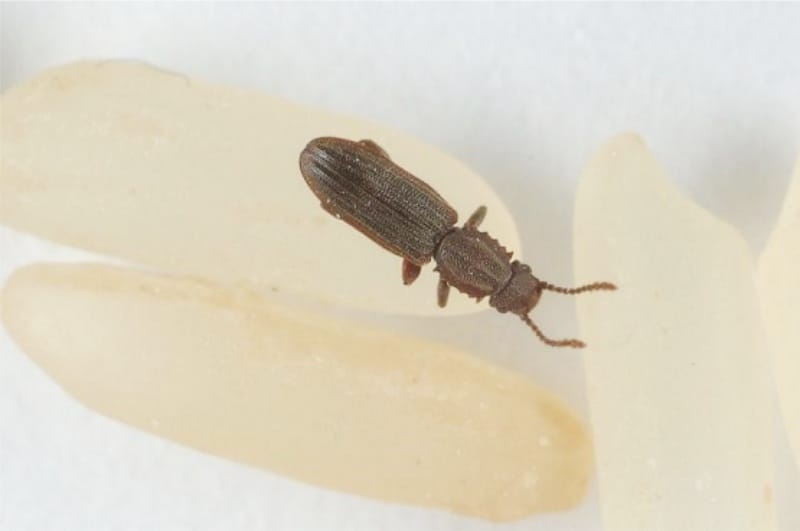
Suriname mucoed
Next is a photo of a Meal Khrushka or a Meal Beetle (Latin name: Tenebrio molitor). By the way, mealworms are the larvae of the mealworm.
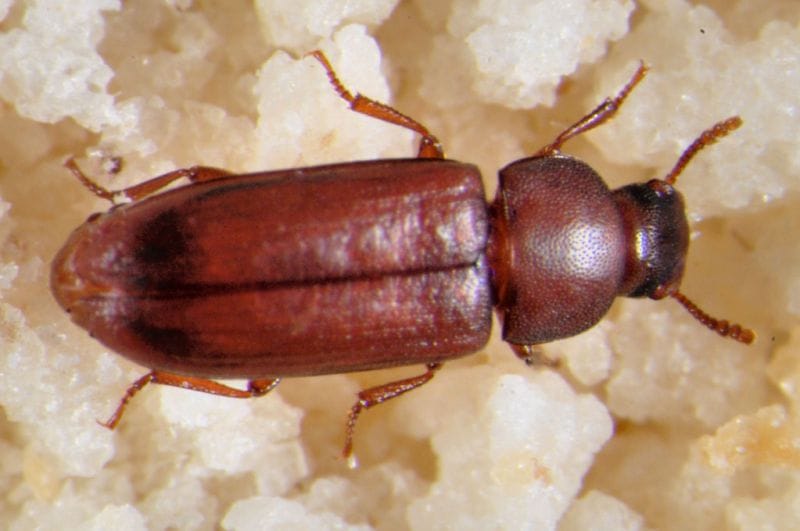
Mealworm
The following photo shows the Bread Grinder, the Skinworm, or the Drug Beetle in the company of its kind (Latin name for the grinder: Stegobium paniceum).
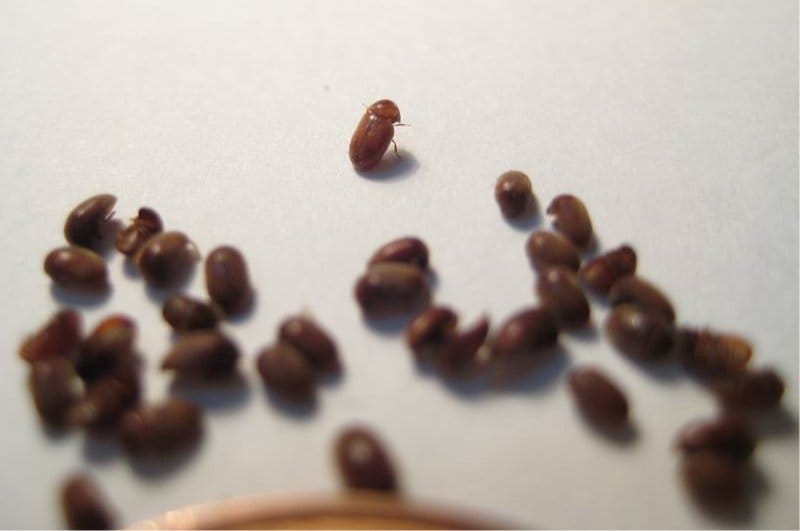
Bread grinder
And finally, a photo of rice weevils or elephants.

Weevils
We offer to watch a video on how to protect products from bugs in the kitchen.
- Blackflies in the kitchen! Who are they and how to get rid of them
- How to get rid of midges in flowers
- How to get rid of moths in the kitchen forever in 5 steps
- 6 ways to clean a burnt or old pan
- How to wash the refrigerator in 7 steps and eliminate odors with 8 home remedies
- How to remove scale from the kettle - 6 home remedies

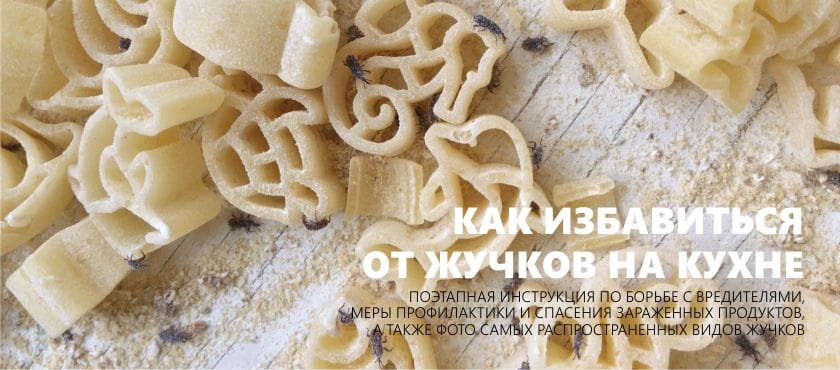

 (Rate the material! Already voted:57 average rating: 4,47 from 5)
(Rate the material! Already voted:57 average rating: 4,47 from 5)
The parasites have already reached not only the intestines, but also the kitchen ... with the intestines it is easier, of course, I have drunk off a triad and have forgotten, and the kitchen is a complete hemorrhage. I will try to get rid of them with the help of storage organization and bay leaf.